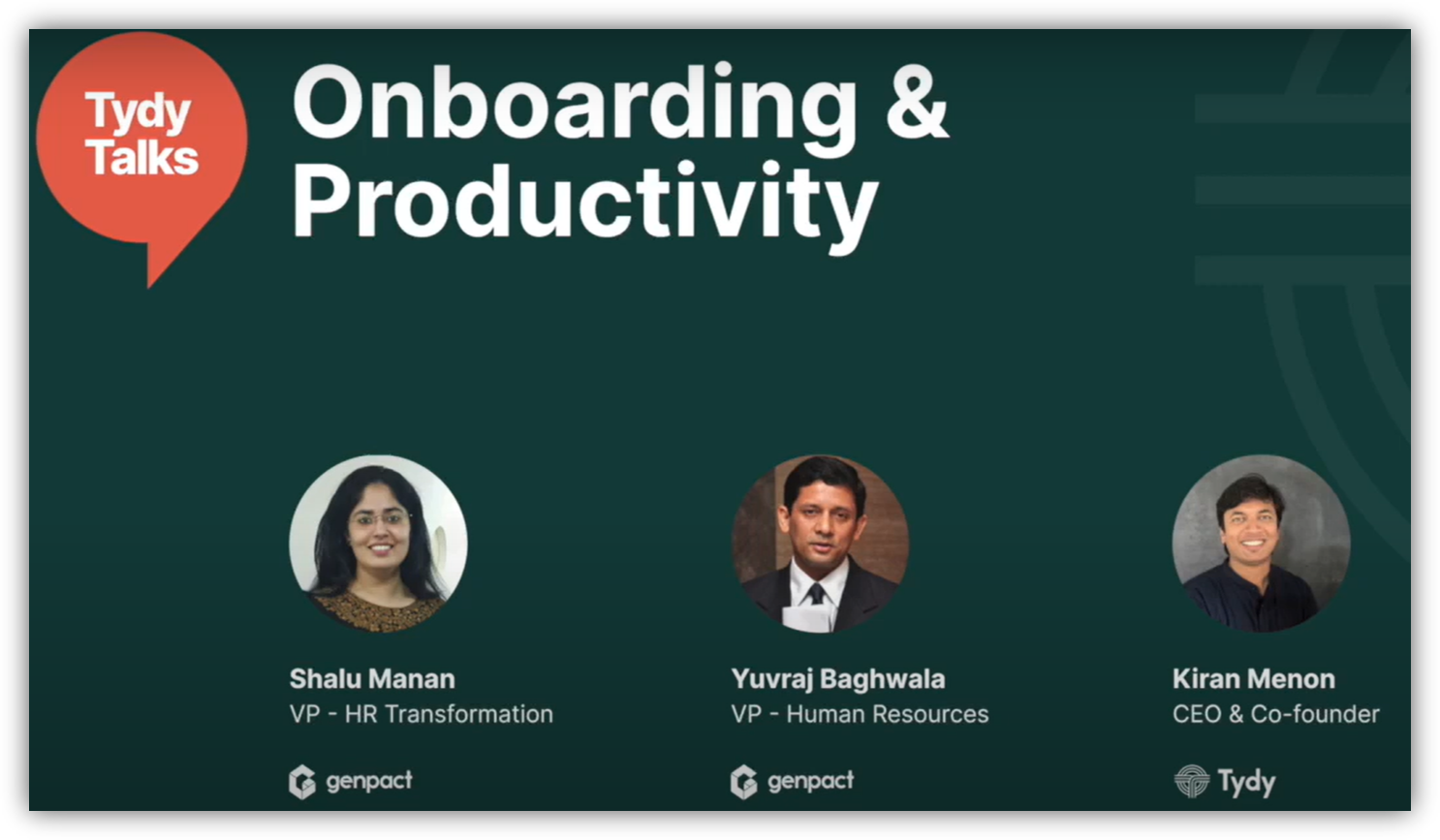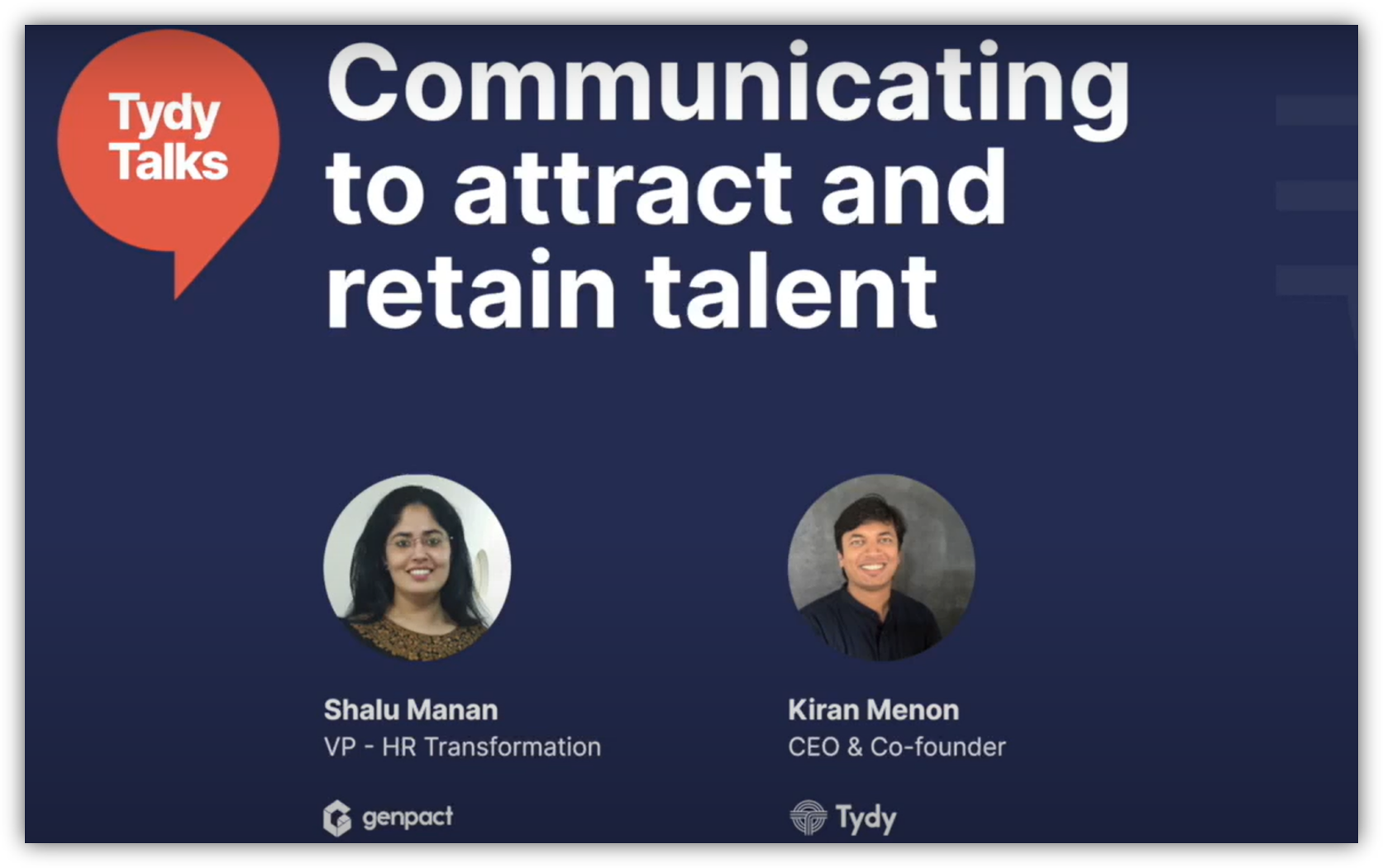Employee onboarding has been evolving at a tremendous pace and COVID has served as an unexpected catalyst accelerating the pace of this change. Kiran Menon caught up with Genpact's Yuvraj Baghwala, VP, HR and Shalu Manan, VP, HR Transformation for a conversation on onboarding at the global professional services firm.
For those of you who missed the episode, here’s a quick overview of all the insightful things that they had to share.
But first things first. Why are Yuvraj and Shalu the best people to tell us this story?
Because both of them joined Genpact over two decades ago! In all these years, they have not only witnessed global events and industry transformations impact employee onboarding, but have also actively participated in adapting to those changes.
What did onboarding look like 20 years ago?
When Yuvraj and Shalu first joined Genpact, the onboarding process looked something like this:
- Find your way to the office on the first day, at a time when Google Maps didn’t exist nor did Whatsapp to share directions with new hires!
- Fill out more than 40 forms on the first day! (and sometimes not even know why you are filling out those forms)
- Sit through three full days of an orientation program for new employees.
“In fact, in the first few months, I even got paper cheques for my salary. Now you get your bank account configured Day 1, right! ”, quips Yuvraj.
Watch the conversation about the evolution of Onboarding at Genpact

And btw, this wasn’t just Genpact alone. Employee onboarding looked similar in most organizations back then.
So, what changed over the last two decades?
- Time is currency! - Organizations became more conscious of how an employee’s time is utilized and started questioning activities that were time-consuming but weren't adding any value to the employee or the organization. Filling 40 forms during onboarding, for example.
- Technology has taken over - The digital era is here. And being able to adopt the right technologies, automate mundane tasks and make life easier for HR teams and new hires is now not only possible but also an unsaid expectation.
- People’s expectations have changed/are changing - New generations with very different sets of expectations have joined the workforce. Understanding and adapting to their needs - no matter how new or different they are - is critical to the success of any employee onboarding process.
In this context, Shalu also mentions four expectations from the new generation that every organization must focus on:
- What is the organization doing for the community?
Corporate Social Responsibility is important to the new generation. They expect organizations to be actively involved with the communities they serve and work towards the collective good.
- How tech-savvy is the organization?
Gen Zs do not want to downgrade their tech savviness to fit into an organization. Very naturally, they expect the companies they join to be as digitally progressive as they are or even more.
- What are the organization’s ethics?
Ethics matter to the younger generation. They want to work with organizations that walk the talk and live their ethics in word and spirit.
- How much is the organization ready to invest in them?
Learning and growing are important aspects of work life for the new generation employees. While they give their best at work, they also want access to growth opportunities and mentors, and develop professionally throughout their journey with the organization.
Watch Shalu Manan talk about Gen Z's expectations from their employers

- The norms of communication are evolving
There was a time when only emails were meant for professional communication. Then with time, the boundaries around formal communication flexed a little more to bring in SMSes and Whatsapp within its fold and now, it's Slack or Teams. We might also move to Snapchat and more in the future but that’s something we need to wait and watch out for!
- Three-day long in-person orientation programs are on hold
Videos have taken over instead.
“With videos, the messaging is consistent and there’s predictability around the message that’s conveyed”, points out Yuvraj.
And sharing information as bite-sized content packages that let new hires consume them at their pace and more easily is becoming the norm. This is not to say that the in-person orientation programs are dead. It had its charm and helped with building connections and might make a comeback in a different format.
- Employee onboarding beyond compliance and paperwork
Paperwork and compliance are now only one part of the onboarding equation. The other and more important part is helping the new hire feel that they have made the right decision by joining this organization. Onboarding teams need to cater to the most common emotions that well up during this phase of an employee’s journey.
- Do I feel proud about my decision to join this company?
- Do I feel confident enough to take on the role assigned to me?
- Does someone within this organization have my back?
Watch Yuvraj and Shalu discuss the shift in onboarding and its impact on productivity

Lastly, the ripple effect of great employee onboarding experience…
“For something as serious as starting your new job or switching to a new one, one of the critical moments is your onboarding experience because it influences the perception about the brand one is going to join - whether good or bad”, says Shalu.
In fact, from the day the job offer has been rolled out, the person is evaluating their decision to join the company. And up to almost three months, they are looking for answers that validate their decision. This is where employee onboarding plays the most critical role.
“Can you give your new employees enough reasons to feel reassured about their decision to join your company?”.
If yes, this sense of pride in their choice of company will reflect in their work and will be visible to others around them. So be it employee productivity, employer branding, referrals and more, a lot can come out of a great onboarding experience.
Watch to learn how Genpact attracts and retains talent

If you want to learn about more employee onboarding best practices from companies like Unilever, EXL, Swiggy or Aptean, just schedule a call with us. We're happy to chat!
Related article
Better, faster, stronger.




